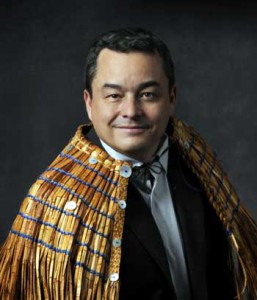 THUNDER BAY – The report on Youth Suicides at Pikangikum First Nation is generating reaction from First Nations. The report which was commissioned in 2010 and released on September 2nd, offers information and directives on what to do about the growing epidemic of youth suicide on First Nations reserves.
THUNDER BAY – The report on Youth Suicides at Pikangikum First Nation is generating reaction from First Nations. The report which was commissioned in 2010 and released on September 2nd, offers information and directives on what to do about the growing epidemic of youth suicide on First Nations reserves.
“First and foremost, my thoughts are with the families and community members of the young people lost from suicide in Pikangikum and across Ontario and Canada,” said Assembly of First Nations (AFN) National Chief Shawn Atleo. “In honour of their memory we must look to the future and create a better day for our youth. I urge all levels of government to immediately review and act on the recommendations in this report, particularly those that speak to the necessity of achieving basic infrastructure needs in First Nation communities and achieving fairness and equity in education, including comparable funding arrangements and culturally relevant education supportive of lifelong learning and respectful of First Nation traditions and languages. While suicide prevention is essential, education is the key to unlock the full potential of our young people and to provide them the hope and opportunity they need. They must be supported to achieve success through education.”
National Chief A-in-chut Atleo today welcomed a report from Ontario’s Chief Coroner on youth suicide in Pikangikum First Nation and urged the provincial and federal governments to address the many recommendations aimed at ensuring First Nation youth are supported in achieving success in and outside their communities.
The report – The Office of the Chief Coroner’s Death Review of the Youth Suicides at the Pikangikum First Nation 2006-2008 – was released this morning by Ontario Chief Coroner Dr. Andrew McCallum. It includes a total of 100 recommendations in the areas of education, policing, child welfare and health care, with a particular focus on the development of suicide prevention strategies.
The Coroner’s report states: “A lack of an integrated health-care system, poor education by provincial standards and a largely absent community infrastructure are uniquely positioned against the backdrop of colonialism, racism, lack of implementation of self-determination and social exclusions.”
“To all those in Pikangikum, let me offer this message – our hearts and minds are with you. We stand with you and join our voices with yours and all First Nation citizens in seeking understanding and support for a better tomorrow. We take this stand together, to resolve and take full responsibility to protect and nurture our families and children and we will take every step to support your advocacy,” said National Chief Atleo.
Key recommendations include:
70. Funding for First Nations education should be provided by INAC (Aboriginal Affairs and Northern Development Canada) at a level comparable to that provided to other children and youth being educated in the province of Ontario.
71. INAC should fulfill its commitment to build a new school in Pikangikum as soon as possible. The school should be built to; accommodate all children currently of school age and projected into the future, include children’s playgrounds, soccer fields, baseball diamonds, and basketball courts, include an auditorium where community members can gather for traditional and cultural community events, and include a daycare facility.
The report reviewed the suicide deaths of 16 First Nation youth between the ages of 10-19 between 2006 and 2008. The review began March 2010 and involved a number of parties, including health care professionals, the Provincial Advocate for Children and Youth and child welfare providers. A multidisciplinary team, including Pikangikum First Nation Chief, Council and Elders and Nishnawbe Aski Nation Grand Chief Stan Beardy, contributed expertise, guidance and insight during the review process.
The review and report come after numerous calls from First Nation leadership across Nishnawbe Aski Nation and Ontario to address the youth suicide crisis in their territory.






